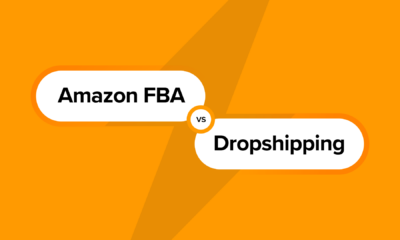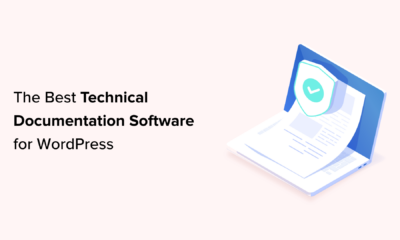TECHNOLOGY
Everything You Need To Know About PLM Software

PLM (Product Lifecycle Management) is a set of software solutions for managing the lifecycle of an item, from its conception to its obsolescence.
Although PLM is often associated with large structures, it can also be leveraged by small and medium-sized companies, as well as business partners. Here is everything you need to know about the use of PLM software.
What is Product Lifecycle Management?
Product Lifecycle Management (PLM) is a comprehensive approach to managing the entire lifecycle of a product. It involves the integration of people, data, processes, and business systems to achieve a common goal of improving product quality, reducing costs, and accelerating time-to-market. The PLM process begins with the conceptualization of a product idea and extends all the way through design, engineering, production, and disposal. Throughout the lifecycle of a product, PLM tools help teams collaborate, streamline workflows, automate tasks, and track data to ensure that all stages of the process are managed effectively. PLM enables organizations to bring better products to market faster and at a lower cost.
Benefits of PLM Software in the Industrial Sector

The industrial sector is the preferred domain for the use of PLM software. Whether it’s automotive, aerospace, electronics, defense or engineering, all branches of industry use technology for various purposes. Indeed, these entities have a common process that boils down to the development, expansion, construction and maintenance of items.
By using PLM tools, industrial organizations can perform many tasks more easily including:
-
Controlling the exchanges around the development of the articles
-
Integrating of contributions to the elaboration
-
Improving administrative management
-
Enhancing the manufacturing process
-
Verifying quality
-
Maintaining supply chain
PLM software also helps companies proactively manage regulatory compliance risks. Regulations are complex and evolving. Large companies need to ensure that their products are compatible with current standards. With solutions such as cloud plm, managers can set up tools to ensure that regulatory requirements are met in production. This is a very efficient way to make quick one-click changes from the production source.
Challenges of PLM Software
While PLM software offers numerous benefits to companies, there are also some challenges associated with its implementation and use. Here are a few challenges of PLM software:
-
Integration with existing systems: One of the main challenges of implementing PLM software is integrating it with existing systems such as ERP and CRM software. This is because these systems may have their own data models and business processes that can be different from those in PLM software. Integration can be time-consuming and complex, and requires a significant investment in terms of both time and money.
-
Data management: PLM software generates a lot of data, which can be difficult to manage. The challenge lies in ensuring that the data is accurate, up-to-date, and easily accessible to all stakeholders. In addition, companies must have a strategy for backing up and archiving data to ensure that it is not lost in the event of a system failure.
-
Change management: Implementing PLM software can require changes to existing business processes, which can be difficult to manage. Companies must ensure that all stakeholders are on board with the changes and that they have the necessary training and resources to adapt to the new system.
-
Cost: PLM software can be expensive to implement and maintain, particularly for small and medium-sized enterprises (SMEs). Companies must carefully evaluate the costs and benefits of implementing PLM software to ensure that it is a worthwhile investment.
-
User adoption: User adoption can be a challenge when implementing PLM software. Some employees may be resistant to change, and may not fully embrace the new system. Companies must provide adequate training and support to ensure that employees are comfortable using the new software.
PLM Software Integration in SMEs: Overcoming Resource Constraints and Improving Supply Chain Efficiency
Small and medium-sized enterprises (SMEs) typically implement technology advances later than the industry. However, they face unique challenges when it comes to product management. With limited resources, they must be quick to respond to the needs of the competitive marketplace.
PLM technology enables savvy entrepreneurs to meet these challenges by providing built-in automation to their product management. In addition, the implementation of these solutions in SMBs helps to improve the efficiency of their supply chain. They now have real-time, fixed data on the status of their materials and manufacturing processes.
Finally, SMBs are using PLM software to identify bottlenecks in their supply chain. This allows them to implement mitigating measures to minimize disruptions in production. It also ensures a watertight security in the production chain and gives a straight line of evolution of the services.
Enhancing the Product Lifecycle Management with Digital Twins

Digital twins are computerized models of physical assets that provide a virtual representation of the object’s behavior throughout its lifecycle. To have the greatest impact, digital twins need to be supported by interconnected systems that reference the same information through the digital thread, enabled by modern PLM software. This way, any changes to the digital twin can be made quickly and accurately in real time, ensuring that decisions are based on the most up-to-date information.
As data is collected from various sources, including customers, factories, IoT sensors, AI, machine learning, PLM, and operations, it is woven into the digital thread to create a more accurate digital twin. This allows the use of digital twins to make higher-quality products, ensure optimal performance, run virtual scenarios, or predict the cost/benefit of product modifications without actual implementation.
One of the main advantages of digital twins is the ability to simulate changes without having to prototype or physically modify the object. For instance, if you want to change a product’s design, you can simulate it on the digital twin to see its impact before implementation. Similarly, if you want to reduce production downtime by changing a machine’s ball bearing, you can simulate the change on the digital twin to see the result. The use of digital twins supported by PLM software allows for more efficient and effective product lifecycle management.
The Right PLM Software Can Improve Partnerships with Better Product Design and Development
PLM solutions are also useful in partnerships, especially in collaborations with suppliers or agreements between companies. PLM software is used by entities to collaborate on product design and development. More simply, they share information related to intellectual development and then manufacturing processes. This is a great asset to work more efficiently together and reduce time to market. This new method will allow each partner member to better control the production line. A succession of steps that remains explicit at the level of each partnership.
Companies can also use PLM tools to cooperate with suppliers by giving them accurate information about product requirements. These requirements typically include design specifications and delivery times. This allows suppliers to better understand the company’s needs and respond in a more satisfactory manner. Managers can use these tools to monitor their suppliers’ regulatory and quality compliance.
TECHNOLOGY
Next-gen chips, Amazon Q, and speedy S3

AWS re:Invent, which has been taking place from November 27 and runs to December 1, has had its usual plethora of announcements: a total of 21 at time of print.
Perhaps not surprisingly, given the huge potential impact of generative AI – ChatGPT officially turns one year old today – a lot of focus has been on the AI side for AWS’ announcements, including a major partnership inked with NVIDIA across infrastructure, software, and services.
Yet there has been plenty more announced at the Las Vegas jamboree besides. Here, CloudTech rounds up the best of the rest:
Next-generation chips
This was the other major AI-focused announcement at re:Invent: the launch of two new chips, AWS Graviton4 and AWS Trainium2, for training and running AI and machine learning (ML) models, among other customer workloads. Graviton4 shapes up against its predecessor with 30% better compute performance, 50% more cores and 75% more memory bandwidth, while Trainium2 delivers up to four times faster training than before and will be able to be deployed in EC2 UltraClusters of up to 100,000 chips.
The EC2 UltraClusters are designed to ‘deliver the highest performance, most energy efficient AI model training infrastructure in the cloud’, as AWS puts it. With it, customers will be able to train large language models in ‘a fraction of the time’, as well as double energy efficiency.
As ever, AWS offers customers who are already utilising these tools. Databricks, Epic and SAP are among the companies cited as using the new AWS-designed chips.
Zero-ETL integrations
AWS announced new Amazon Aurora PostgreSQL, Amazon DynamoDB, and Amazon Relational Database Services (Amazon RDS) for MySQL integrations with Amazon Redshift, AWS’ cloud data warehouse. The zero-ETL integrations – eliminating the need to build ETL (extract, transform, load) data pipelines – make it easier to connect and analyse transactional data across various relational and non-relational databases in Amazon Redshift.
A simple example of how zero-ETL functions can be seen is in a hypothetical company which stores transactional data – time of transaction, items bought, where the transaction occurred – in a relational database, but use another analytics tool to analyse data in a non-relational database. To connect it all up, companies would previously have to construct ETL data pipelines which are a time and money sink.
The latest integrations “build on AWS’s zero-ETL foundation… so customers can quickly and easily connect all of their data, no matter where it lives,” the company said.
Amazon S3 Express One Zone
AWS announced the general availability of Amazon S3 Express One Zone, a new storage class purpose-built for customers’ most frequently-accessed data. Data access speed is up to 10 times faster and request costs up to 50% lower than standard S3. Companies can also opt to collocate their Amazon S3 Express One Zone data in the same availability zone as their compute resources.
Companies and partners who are using Amazon S3 Express One Zone include ChaosSearch, Cloudera, and Pinterest.
Amazon Q
A new product, and an interesting pivot, again with generative AI at its core. Amazon Q was announced as a ‘new type of generative AI-powered assistant’ which can be tailored to a customer’s business. “Customers can get fast, relevant answers to pressing questions, generate content, and take actions – all informed by a customer’s information repositories, code, and enterprise systems,” AWS added. The service also can assist companies building on AWS, as well as companies using AWS applications for business intelligence, contact centres, and supply chain management.
Customers cited as early adopters include Accenture, BMW and Wunderkind.
Want to learn more about cybersecurity and the cloud from industry leaders? Check out Cyber Security & Cloud Expo taking place in Amsterdam, California, and London. Explore other upcoming enterprise technology events and webinars powered by TechForge here.
TECHNOLOGY
HCLTech and Cisco create collaborative hybrid workplaces

Digital comms specialist Cisco and global tech firm HCLTech have teamed up to launch Meeting-Rooms-as-a-Service (MRaaS).
Available on a subscription model, this solution modernises legacy meeting rooms and enables users to join meetings from any meeting solution provider using Webex devices.
The MRaaS solution helps enterprises simplify the design, implementation and maintenance of integrated meeting rooms, enabling seamless collaboration for their globally distributed hybrid workforces.
Rakshit Ghura, senior VP and Global head of digital workplace services, HCLTech, said: “MRaaS combines our consulting and managed services expertise with Cisco’s proficiency in Webex devices to change the way employees conceptualise, organise and interact in a collaborative environment for a modern hybrid work model.
“The common vision of our partnership is to elevate the collaboration experience at work and drive productivity through modern meeting rooms.”
Alexandra Zagury, VP of partner managed and as-a-Service Sales at Cisco, said: “Our partnership with HCLTech helps our clients transform their offices through cost-effective managed services that support the ongoing evolution of workspaces.
“As we reimagine the modern office, we are making it easier to support collaboration and productivity among workers, whether they are in the office or elsewhere.”
Cisco’s Webex collaboration devices harness the power of artificial intelligence to offer intuitive, seamless collaboration experiences, enabling meeting rooms with smart features such as meeting zones, intelligent people framing, optimised attendee audio and background noise removal, among others.
Want to learn more about cybersecurity and the cloud from industry leaders? Check out Cyber Security & Cloud Expo taking place in Amsterdam, California, and London. Explore other upcoming enterprise technology events and webinars powered by TechForge here.
TECHNOLOGY
Canonical releases low-touch private cloud MicroCloud

Canonical has announced the general availability of MicroCloud, a low-touch, open source cloud solution. MicroCloud is part of Canonical’s growing cloud infrastructure portfolio.
It is purpose-built for scalable clusters and edge deployments for all types of enterprises. It is designed with simplicity, security and automation in mind, minimising the time and effort to both deploy and maintain it. Conveniently, enterprise support for MicroCloud is offered as part of Canonical’s Ubuntu Pro subscription, with several support tiers available, and priced per node.
MicroClouds are optimised for repeatable and reliable remote deployments. A single command initiates the orchestration and clustering of various components with minimal involvement by the user, resulting in a fully functional cloud within minutes. This simplified deployment process significantly reduces the barrier to entry, putting a production-grade cloud at everyone’s fingertips.
Juan Manuel Ventura, head of architectures & technologies at Spindox, said: “Cloud computing is not only about technology, it’s the beating heart of any modern industrial transformation, driving agility and innovation. Our mission is to provide our customers with the most effective ways to innovate and bring value; having a complexity-free cloud infrastructure is one important piece of that puzzle. With MicroCloud, the focus shifts away from struggling with cloud operations to solving real business challenges” says
In addition to seamless deployment, MicroCloud prioritises security and ease of maintenance. All MicroCloud components are built with strict confinement for increased security, with over-the-air transactional updates that preserve data and roll back on errors automatically. Upgrades to newer versions are handled automatically and without downtime, with the mechanisms to hold or schedule them as needed.
With this approach, MicroCloud caters to both on-premise clouds but also edge deployments at remote locations, allowing organisations to use the same infrastructure primitives and services wherever they are needed. It is suitable for business-in-branch office locations or industrial use inside a factory, as well as distributed locations where the focus is on replicability and unattended operations.
Cedric Gegout, VP of product at Canonical, said: “As data becomes more distributed, the infrastructure has to follow. Cloud computing is now distributed, spanning across data centres, far and near edge computing appliances. MicroCloud is our answer to that.
“By packaging known infrastructure primitives in a portable and unattended way, we are delivering a simpler, more prescriptive cloud experience that makes zero-ops a reality for many Industries.“
MicroCloud’s lightweight architecture makes it usable on both commodity and high-end hardware, with several ways to further reduce its footprint depending on your workload needs. In addition to the standard Ubuntu Server or Desktop, MicroClouds can be run on Ubuntu Core – a lightweight OS optimised for the edge. With Ubuntu Core, MicroClouds are a perfect solution for far-edge locations with limited computing capabilities. Users can choose to run their workloads using Kubernetes or via system containers. System containers based on LXD behave similarly to traditional VMs but consume fewer resources while providing bare-metal performance.
Coupled with Canonical’s Ubuntu Pro + Support subscription, MicroCloud users can benefit from an enterprise-grade open source cloud solution that is fully supported and with better economics. An Ubuntu Pro subscription offers security maintenance for the broadest collection of open-source software available from a single vendor today. It covers over 30k packages with a consistent security maintenance commitment, and additional features such as kernel livepatch, systems management at scale, certified compliance and hardening profiles enabling easy adoption for enterprises. With per-node pricing and no hidden fees, customers can rest assured that their environment is secure and supported without the expensive price tag typically associated with cloud solutions.
Want to learn more about cybersecurity and the cloud from industry leaders? Check out Cyber Security & Cloud Expo taking place in Amsterdam, California, and London. Explore other upcoming enterprise technology events and webinars powered by TechForge here.
-

 MARKETING6 days ago
MARKETING6 days agoNavigating the Video Marketing Maze: Short-Form vs. Long-Form
-
SEARCHENGINES6 days ago
Daily Search Forum Recap: April 26, 2024
-
SEARCHENGINES4 days ago
Daily Search Forum Recap: April 29, 2024
-

 SEARCHENGINES5 days ago
SEARCHENGINES5 days agoOffline For Last Days Of Passover 5784
-

 WORDPRESS6 days ago
WORDPRESS6 days agoThe Best Option for Online Stores
-

 MARKETING6 days ago
MARKETING6 days agoMicrosoft unveils a new small language model
-

 PPC5 days ago
PPC5 days agoHow to Promote Your Digital Marketing Agency: 4 Growth Strategies
-

 MARKETING5 days ago
MARKETING5 days agoQuiet Quitting vs. Setting Healthy Boundaries: Where’s The Line?














